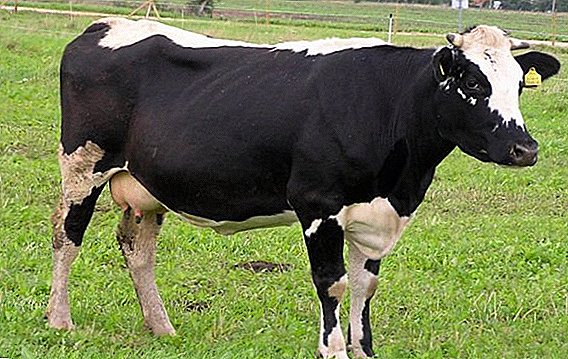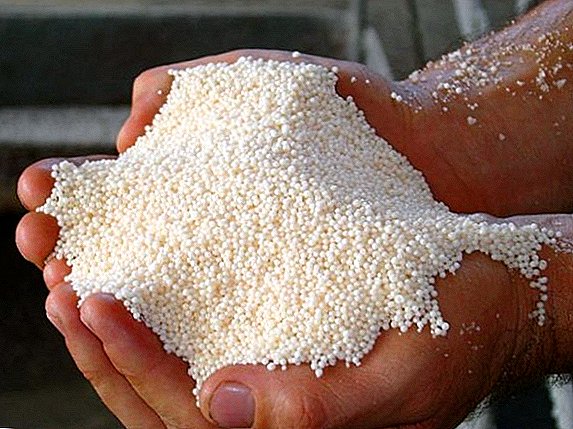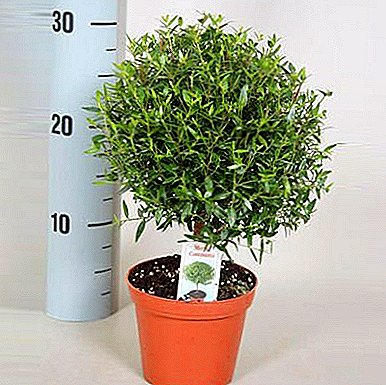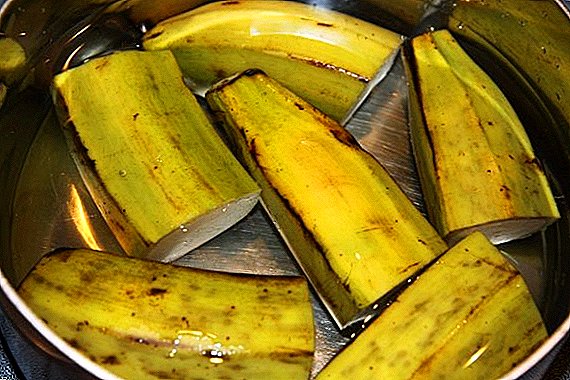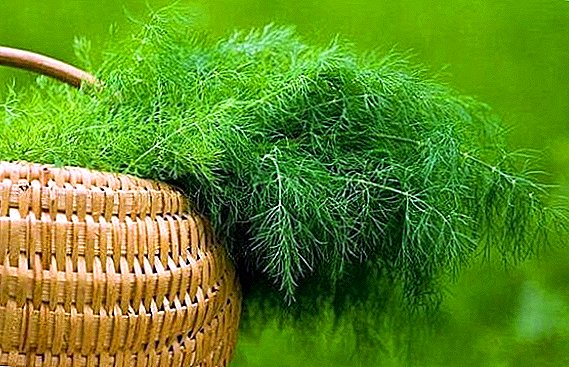 Lily of the valley is a perennial plant with delicate flowers and elegant aroma. This review is intended for beginner flower growers who want to learn how to grow this unusual grass in their backyard.
Lily of the valley is a perennial plant with delicate flowers and elegant aroma. This review is intended for beginner flower growers who want to learn how to grow this unusual grass in their backyard.
Botanical description
To begin with, let's look at what the lily of the valley looks like, and also dwell on a brief biological description of this herb.
Lily of the valley (Convallaria) - genus of perennial herbs of the Asparagaceae family (Asparagaceae). The grass usually reaches a height of 20-25 cm. The root system creeps, the roots themselves are thin. Multiple roots have a fibrous structure.
Leaves are found in numbers from one to three. The leaf is oval oblong, broadly lanceolate, retains a bright green color until the end of July, then turns yellow and withers. Peduncle formed from a flower eye.
In its upper lobe the peduncle is screwed up in a spiral and has a triangular cross section. Flowers are concentrated in the brush for 8-10 pieces. The flowers are small, fragrant, snow-white bells with short stamens.
The length of each bell is 4 mm, and its width is 5 mm. By the end of the blooming phase, the inflorescences lose their color, the ovary is formed - three-chamber fruits. Each berry has 3-6 seeds.  As for the natural areas where lilies of the valley grow, they are usually pine, deciduous or mixed forests, as well as glades and edges. Especially good flowers grow in the floodplain oak forests. Under natural conditions, this grass can be found in almost any country in the European continent.
As for the natural areas where lilies of the valley grow, they are usually pine, deciduous or mixed forests, as well as glades and edges. Especially good flowers grow in the floodplain oak forests. Under natural conditions, this grass can be found in almost any country in the European continent.
Did you know? Different nations of the world call lily of the valley in their own way. For example, the Slovaks and Czechs call it "bun" or "konvalinkoy", the Bulgarians - "the tears of the girl", the Germans - "the May bell", the British - "the valley of lilies."
Popular species
Previously it was believed that the genus Lily of the valley consists of only one polymorphic species - May. On the basis of geographical separation, some lilies of the valley stood out into autonomous species, while the biological characteristics differed very little.
In today's classification, it is customary to distinguish three biological species of the genus:
In the decorative floriculture lilies of the valley divorced from the XY century. Several garden varieties have been developed:


- "Rosea" - possesses light pink inflorescences;
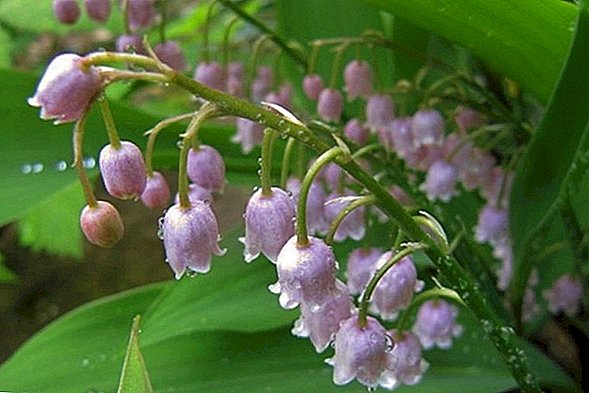
- "Alba Pleno" ("Flore Pleno") or "Alba Plena" ("Flore Plena") - possesses large white terry inflorescences;
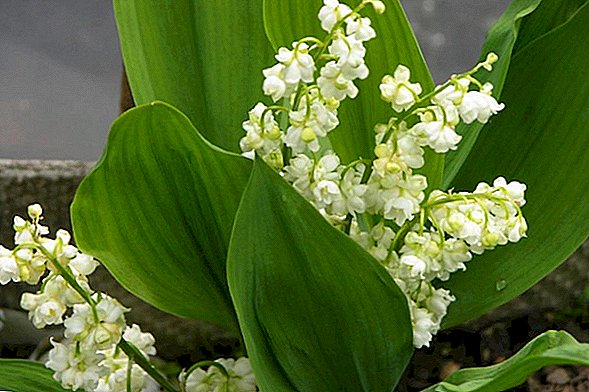
- "Grandiflora" - it is allocated with large inflorescences;
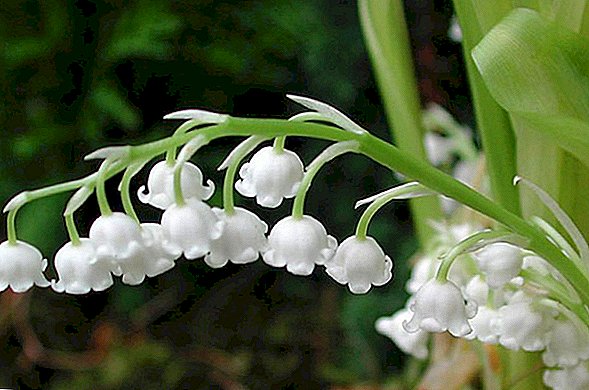
- "Albostriata" - leaves of the plant have creamy white longitudinal stripes;

- "Picta" - with purple spots at the base of the filaments;
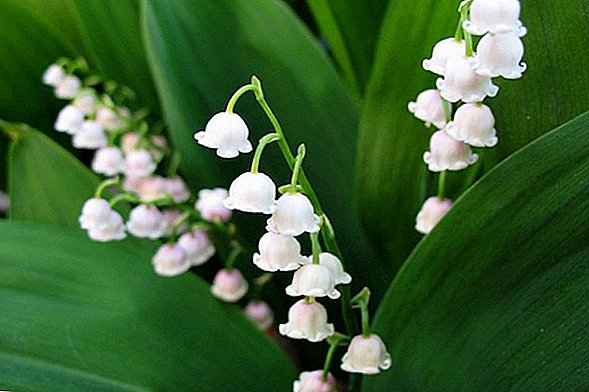
- "Prolificans" - branching pedicels differing from other forms, forming crowded inflorescences;
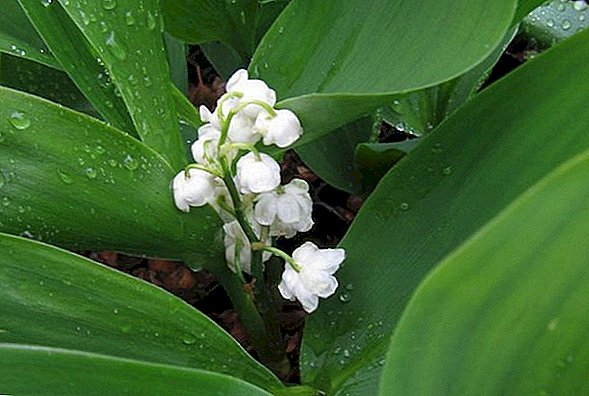
- "Aureovariegata" or "Lineata", "Striata", "Variegata" - different yellow longitudinal stripes on the leaves.
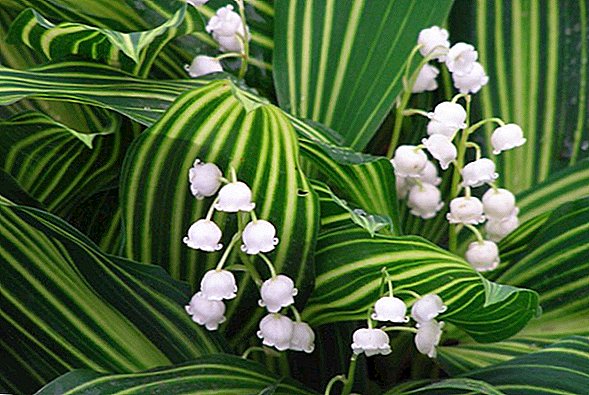
Did you know? In 1967, the lily of the valley became the national flower of Finland. Also this grass is a symbol of the state of Massachusetts (USA). In France, the Lily of the Valley is celebrated on the first Sunday of May every year. The stylized lily of the valley is depicted in the fields of the coats of arms of the cities of Mellerud (Sweden), Weilar (Germany), Lunner (Norway).
The choice of space on the plot
Lily of the valley is a forest grass. In order for lily of the valley to feel like "at home" in your backyard, you must follow the rules of cultivation and care, as well as choose the most comfortable zone for flowers.
Location and light
Lilies of the valley prefer shading location. However, the shading should not be thick, otherwise the flowering will stop. In a continuous shade, a plant devotes all its strength to building leaves.  Plant flowers under trees or shrubs. Also avoid overly lighted areas, which are characterized by active exposure to the direct rays of the sun. Overheating of the soil in the root area negatively affects their growth.
Plant flowers under trees or shrubs. Also avoid overly lighted areas, which are characterized by active exposure to the direct rays of the sun. Overheating of the soil in the root area negatively affects their growth.
It is also known that lilies of the valley do not like strong winds. The fence, the wall of the house, as well as tall trees and shrubs will help protect the plants.
Soil for lily of the valley
It is advisable to prepare the substrate for planting in advance, a year before disembarking, or in the spring. The cultivated layer of earth should be quite deep (25-30 cm).
Lilies of the valley prefer well-drained, light or medium loamy, cool, moist, slightly acidic soils (pH 5). But the plant also grows well on neutral soils. Acidic soil in advance lime.
In addition to lime, add peat compost, manure or humus, as well as some simple superphosphate and potassium sulfate. In the summer, keep the area fallow, do not let the ground overgrow with weed. Before landing, do not forget to loosen the ground. 
Planting flower
Lilies of the valley can be grown from seeds, but it is better to transplant them entirely or use the method of division of rhizomes.
Timing
Flowers preferably planted in the fall. Nevertheless, they are well rooted in the case of spring planting.
In the autumn The best time for the landing is August-September. If you are planting an autumn plant, then in two months sow beans or peas in the plot. Before planting, mow the greens, and put the roots in the ground. The beans will help to enrich the soil with nitrogen and organic matter accumulated in the tubers on the roots.
In the spring Spring disembarkation is also permissible. Actually in the spring you can easily find planting material. The best landing time in this case is April-May. However, when planting in spring, the plants may become ill. Young sprouts will take root more easily in the open ground if you prepare a plot of land in the fall and dig up the soil in the spring before planting. In addition, cover the shoots with polyethylene for the night, thereby protecting them from the early spring frosts.
Planting scheme
- Prepare the material for planting: divide the root into segments of 3-5 cm long with several apical eyes (buds). Pick up cuttings with a large and round apical eye.
- Gardens do not need. On the border of the site, dig in a wide (approximately 20 cm) fence. If there is a threat of fluid retention, with ordinary branches, organize drainage.
- On the roots, shorten the thin roots.
- Place the segments in the wells about 3 cm deep at a distance of 20-25 cm from each other.
- Cover the wells with fertile soil and mulch with leaf humus.

Important! Note that the apical eyes (kidneys) should be covered with a layer of earth of 1-2 cm.
As for when the lilies of the valley bloom, the first buds are expected in the month of May. The grass blooms throughout just two weeks. Thus, the flowering phase will last until early June.
Proper care of lilies of the valley in the garden
After planting, the rooting stage begins, which lasts for one month. During this period, use organic fertilizer, the same mineral substances will be relevant only after a year. Lilies of the valley are unpretentious, so do not saturate them with excess chemicals.
The main rule of care - in a timely manner and regularly water the flower beds. However, do not allow excessive moisture. Water as soon as the soil around the flowers dries. In dry summer weather, irrigation procedures should be increased.
Keep the land in a loose and weed-free condition. It is desirable to get rid of weeds manually. 
Important! All parts of the lily of the valley are poisonous, they contain the poison convallatoxin. The maximum accumulation of poison is found in the berries. Fruits are forbidden to eat. Do not let small children play with this grass. And in order to avoid headaches, it is not recommended to place a vase with flowers in the bedroom. All work on planting and caring for the plant must be carried out with gloves.
What to do after flowering?
Lilies of the valley - aggressive plants. Despite their external fragility, they have excellent "penetrative" properties and are very active in spreading. By planting only a few roots in the ground, you will get a lawn filled with fragrant grass.
These flowers are able to get rid of almost any plant from the garden. Therefore, after flowering, carry out procedures to curb development. For this purpose, enclose the beds with sheets of slate, iron or other similar material. Protect the flower beds so that the slate goes to a depth of about half a meter.
Did you know? The ancient Celts believed that the lilies of the valley - this is the real treasure of fairy elves. In Ukraine, there is a legend that this delicate and fragile flower grows in places where bitter tears of girls who wait for their husbands from the war fall. The English legend narrates that snow-white bells are nothing but small beads of the scattered ornaments of Snow White.

Little about the healing properties
Lilies of the valley are valued for their high concentration of glycosides. About 20 glycosides were detected in all parts of the plant. These substances are used for the production of heart drugs.
Glycosides help to strengthen the heart muscle, as well as regulate energy and lipid metabolism with impaired blood circulation. It is proved that glycosides improve hemodynamics and affect the excretory system.
The range of use of lily of the valley in traditional medicine is somewhat broader. It is used to reduce the swelling of various genesis, with eye diseases and disorders of the nervous system. Usually, weakly concentrated decoctions and tinctures are made from plant parts. 
Important! Due to the concentration in the grass of potent substances, the use of this drug without consulting a doctor is fraught with unpredictable and negative consequences.
With respect to the rules of planting and with minimal care, your garden lily of the valley will not be equal in beauty. You will provide yourself with pleasure every spring to observe the delightful flowering of this delicate flower in your backyard.









